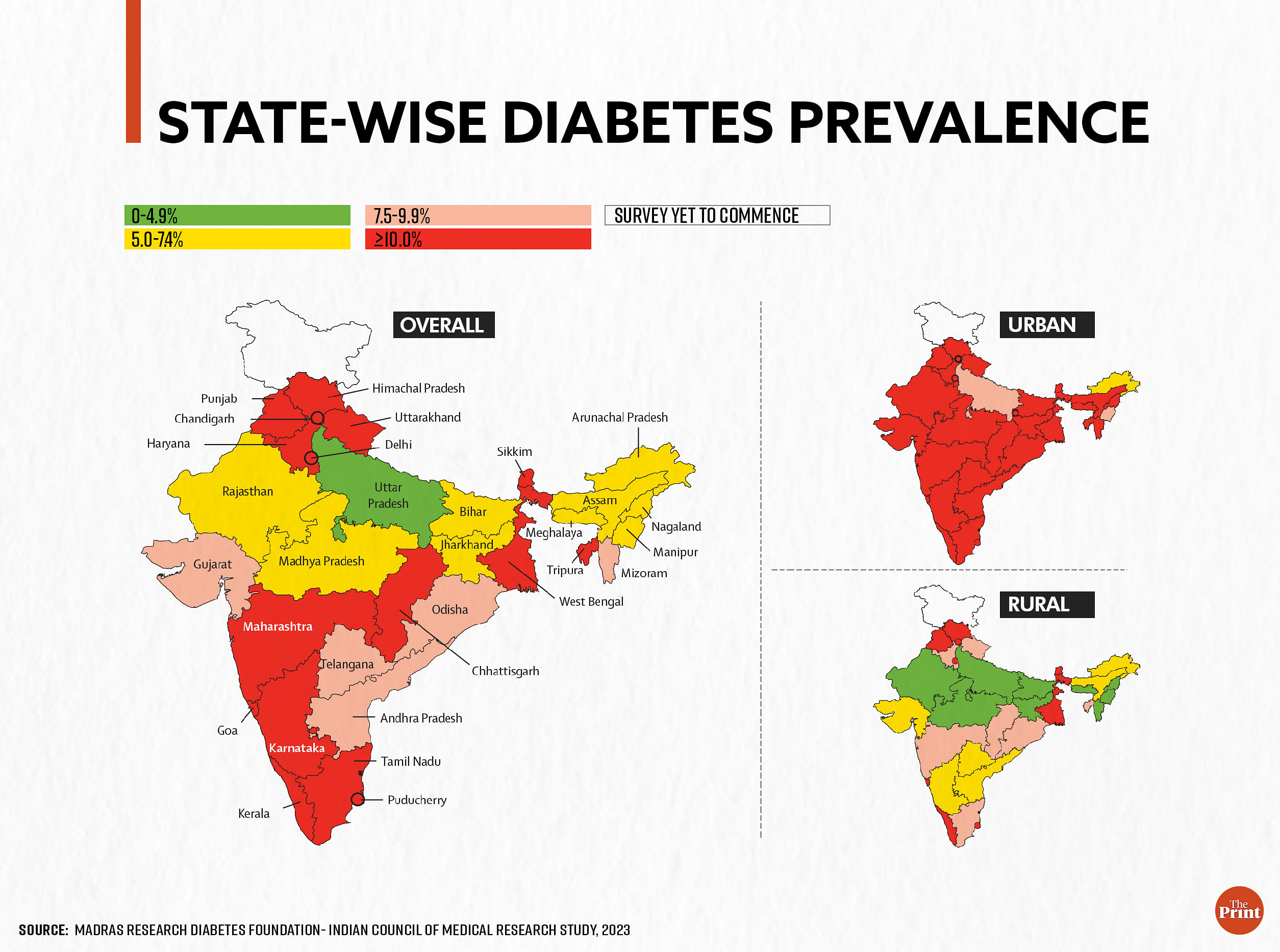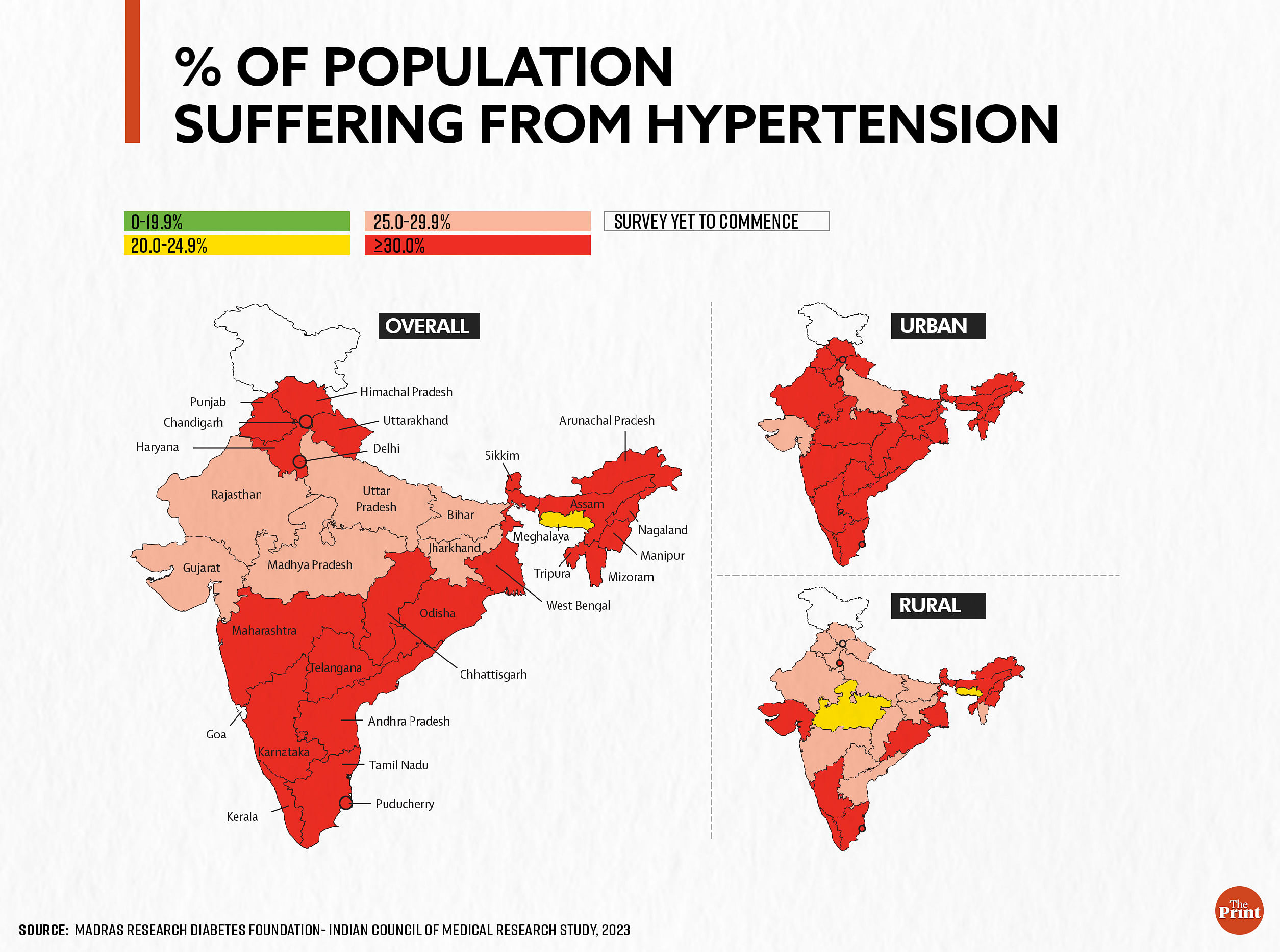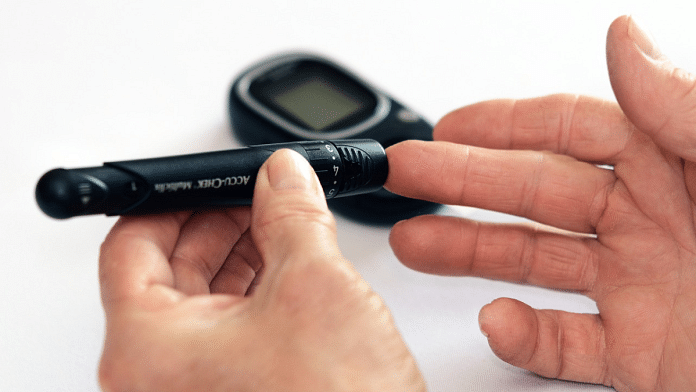New Delhi: A crucial study showing that prevalence of diabetes and other metabolic non-communicable diseases (NCDs), commonly known as lifestyle diseases, in India is considerably higher than previously estimated has also underlined the differences of disease prevalence across states and regions.
The study by the Madras Diabetes Research Foundation and the Indian Council of Medical Research has found that the national prevalence of diabetes is 11.4 percent while a whopping 35.5 percent of Indians suffer from hypertension.

The state-wise prevalence of diabetes ranged from 4.8 percent in Uttar Pradesh to 26.4 percent in Goa while pre-diabetes ranged from 31.3 percent in Sikkim to 6.8 percent in Meghalaya, showed the report published in The Lancet Diabetes & Endocrinology Thursday.

As many as 51.8 percent of people in Punjab were found to be suffering from hypertension but the condition afflicted just 24.3 percent people in Meghalaya. In Puducherry, 53.3 percent of the people had obesity but this percentage was just 11.6 in Jharkhand.
The results are based on a survey that covered 1,13,043 people (33,537 urban and 79,506 rural residents) in 31 states and Union Territories, between 2008 and 2020.
The results prompted the lead author of the study, Dr R.M. Anjana, to say that in India, the diabetes epidemic is in transition — some states have already reached their peak rates while others are just getting started.
“The study also demonstrates that despite the fact that all metabolic NCDs are more common in urban regions, rural areas have significantly greater prevalence rates than those reported previously,” she said in a statement.
Higher prevalence rates of both generalised and abdominal obesity, for instance, were observed in urban areas compared with rural areas.
Overall, abdominal obesity was high in all the regions of India, while generalised obesity was more prevalent in the south followed by the northern and eastern regions.
The prevalence of hypertriglyceridemia (high triglyceride) and low HDL (high-density lipoprotein) cholesterol was high in all the regions of India with very little urban–rural difference, whereas hypercholesterolaemia and high LDL (low-density lipoprotein) cholesterol showed wide interstate and inter-regional variability, with highest prevalence in the northern region, Kerala, and Goa.
“Our study results have multiple implications for the planning and provision of health care in India,” said Dr V. Mohan, senior author of the study in a statement.
“State governments…primarily in charge of providing healthcare in their respective regions, will be especially interested in the detailed state-level data on these NCDs as it will allow them to develop evidence-based interventions,” he said.
(Edited by Smriti Sinha)
Also Read: Indians are growing fatter, and the problem is biggest for wealthy women, shows NFHS data






